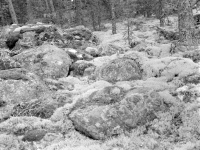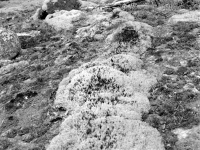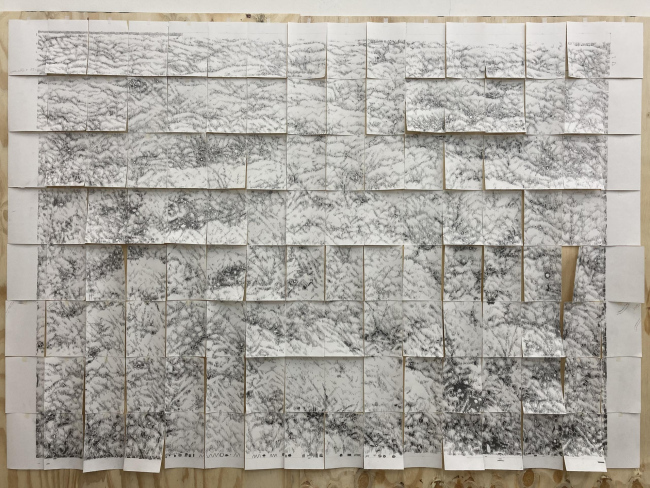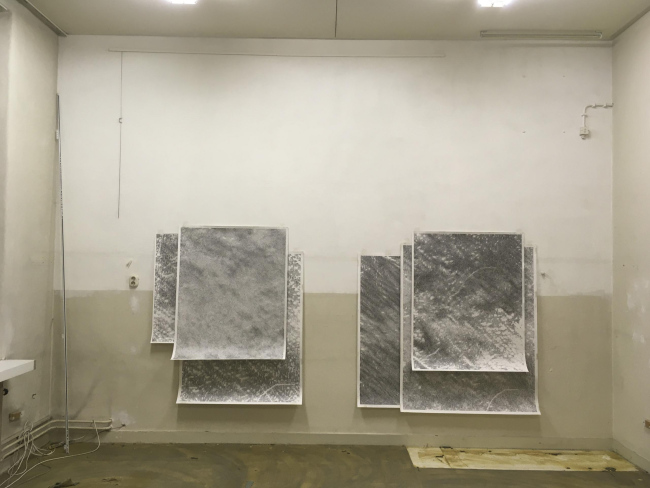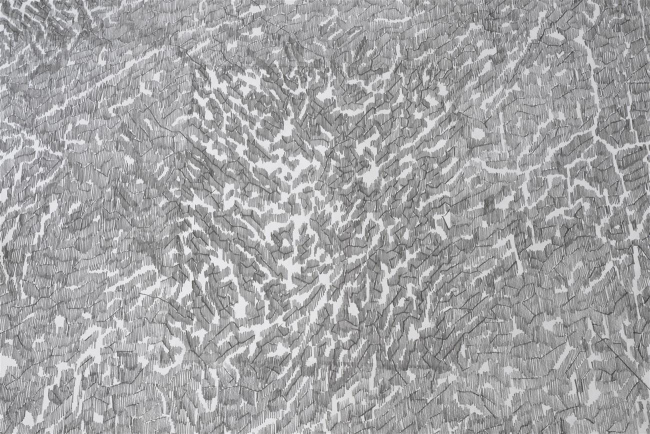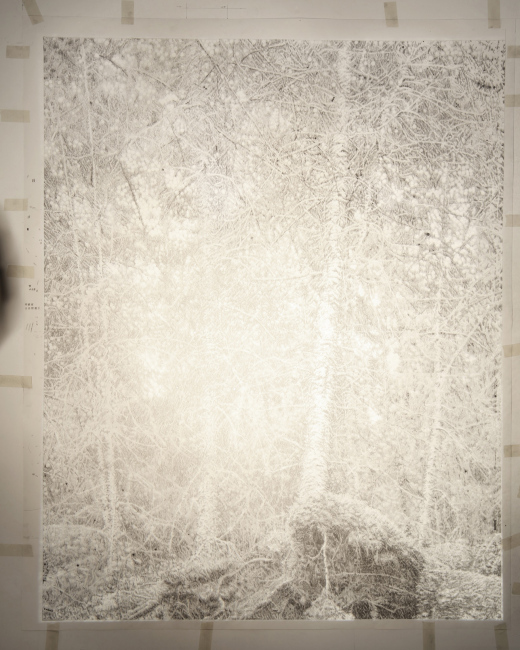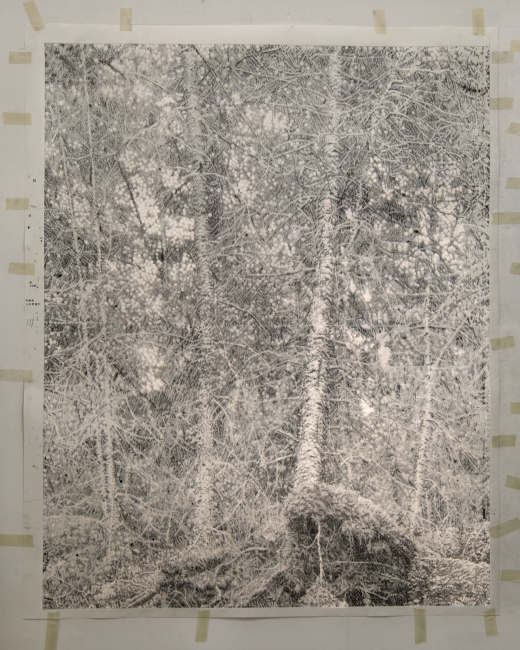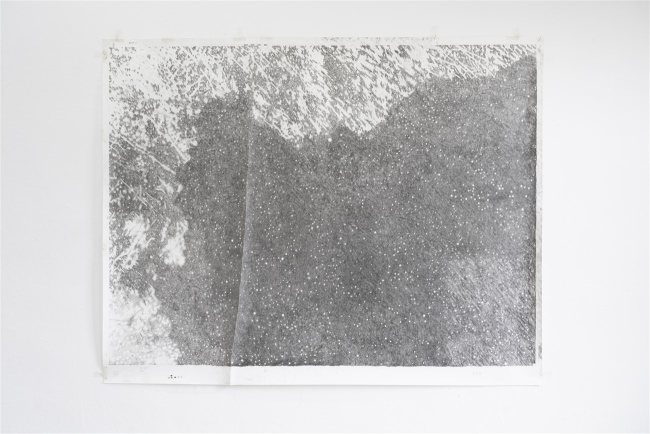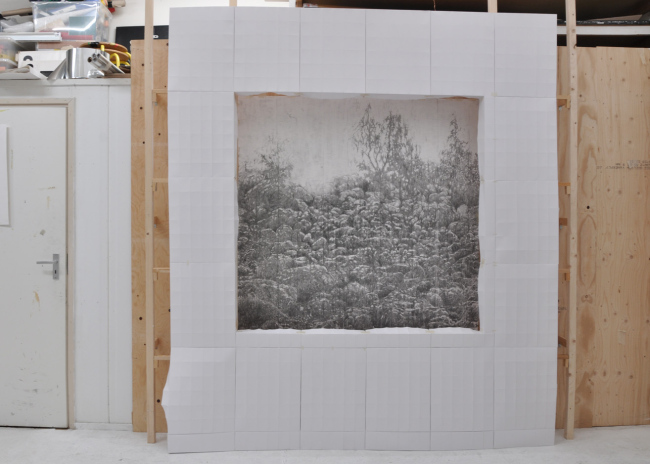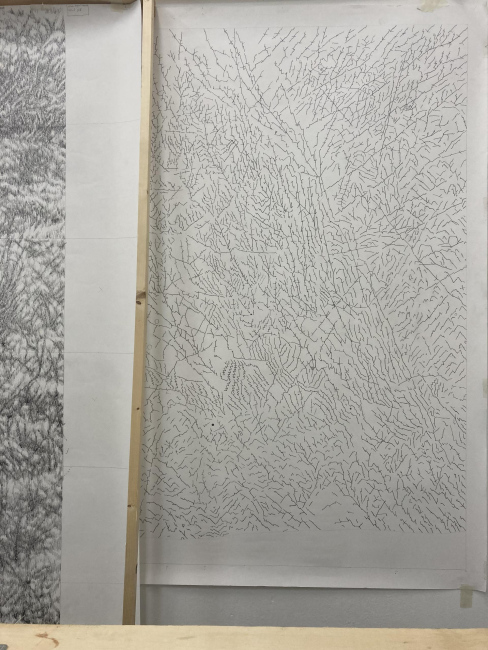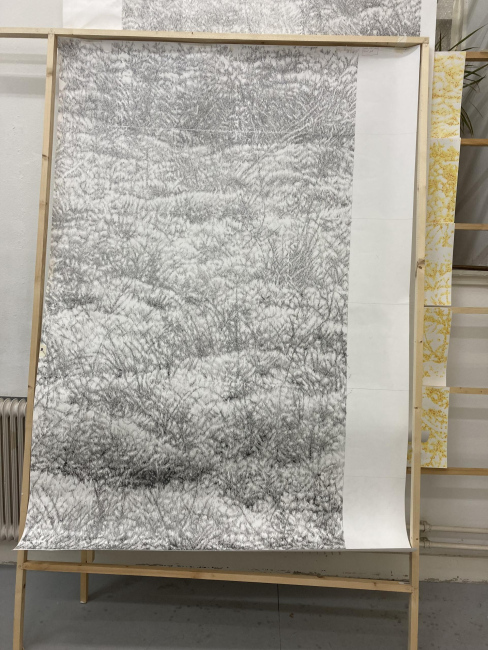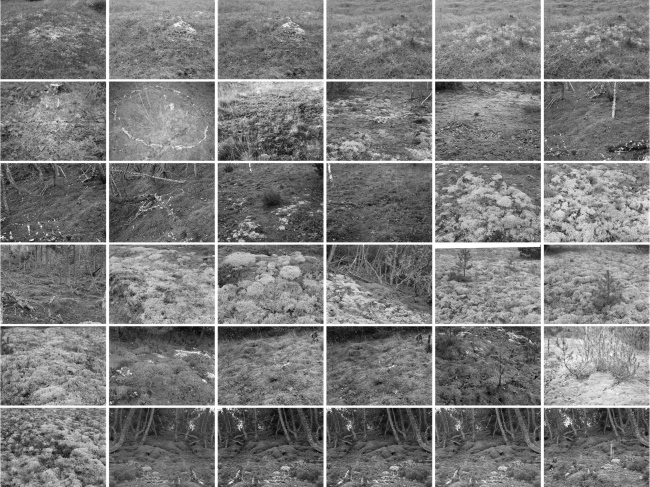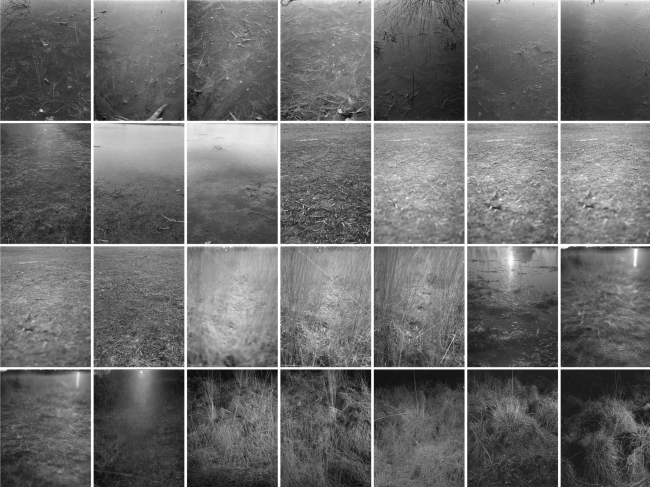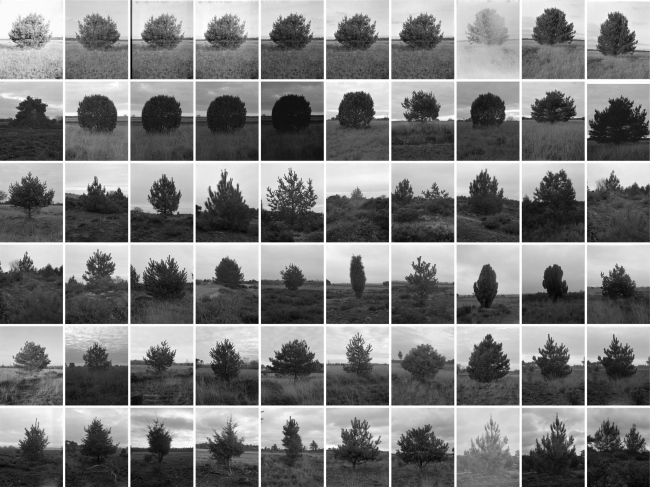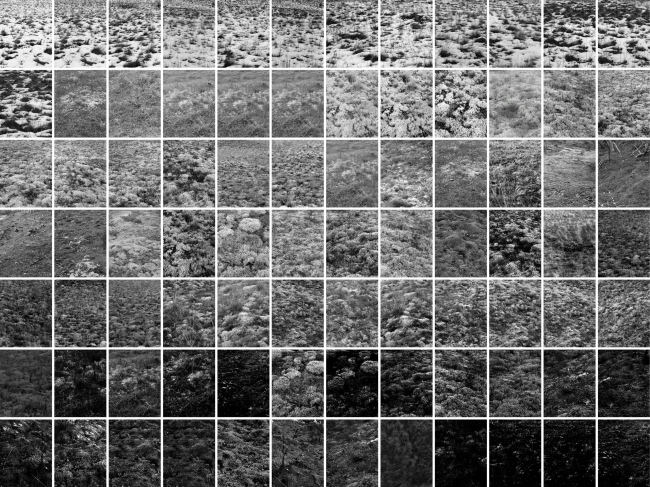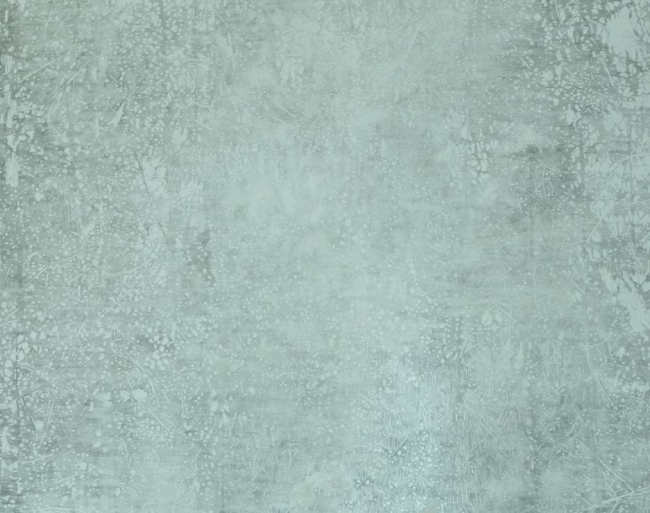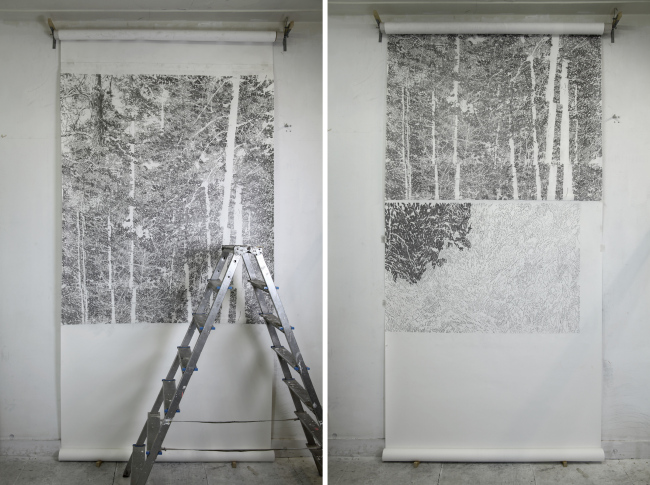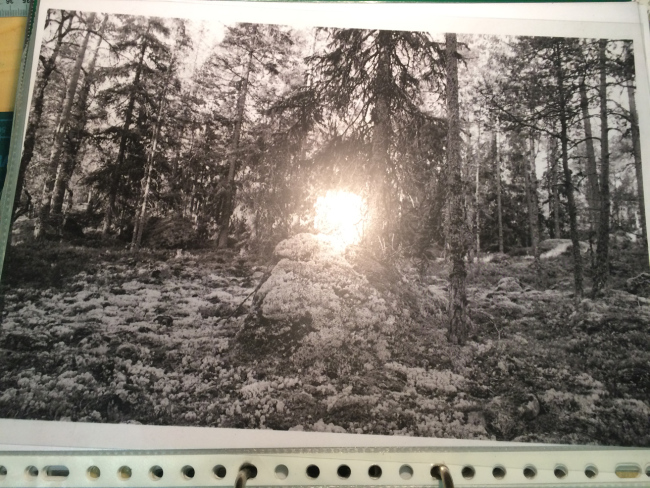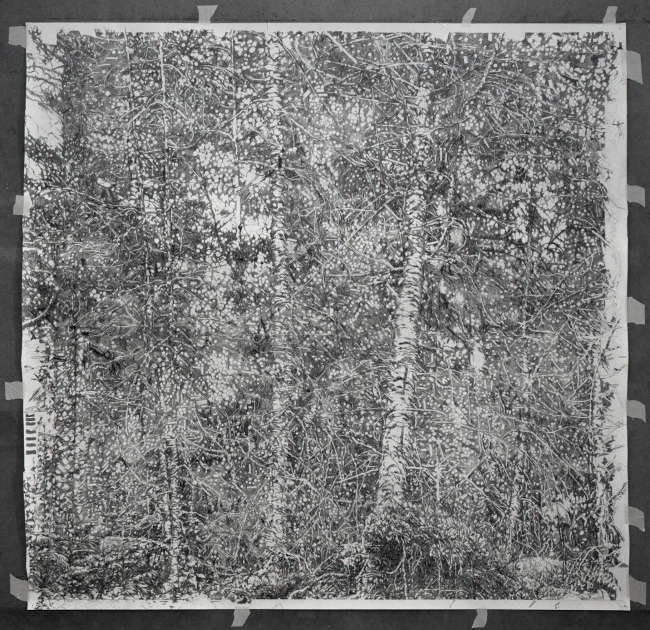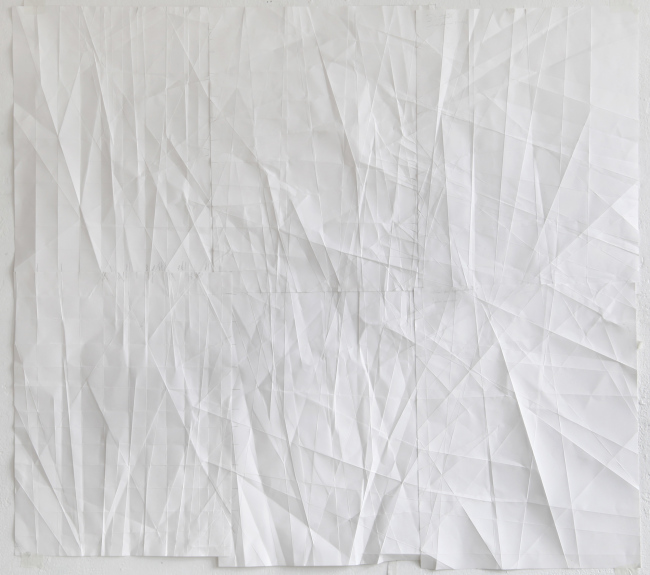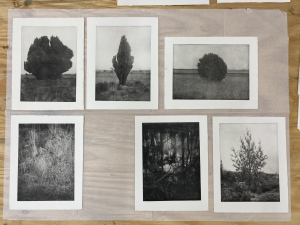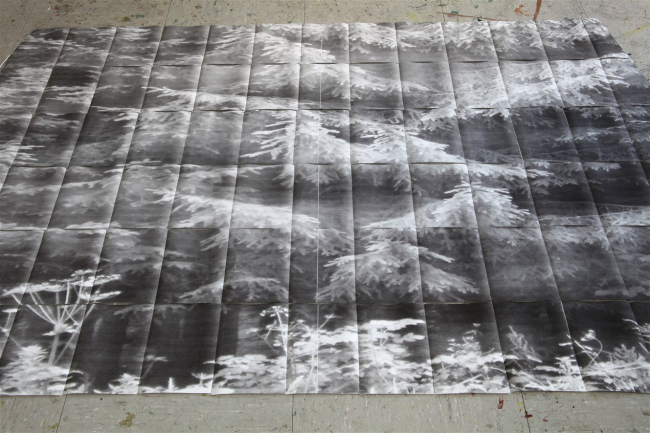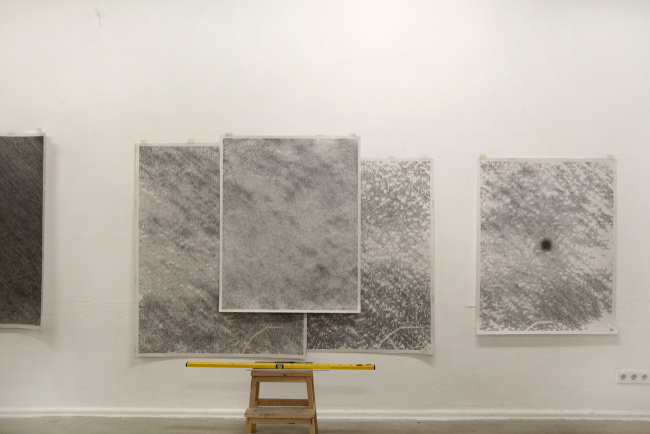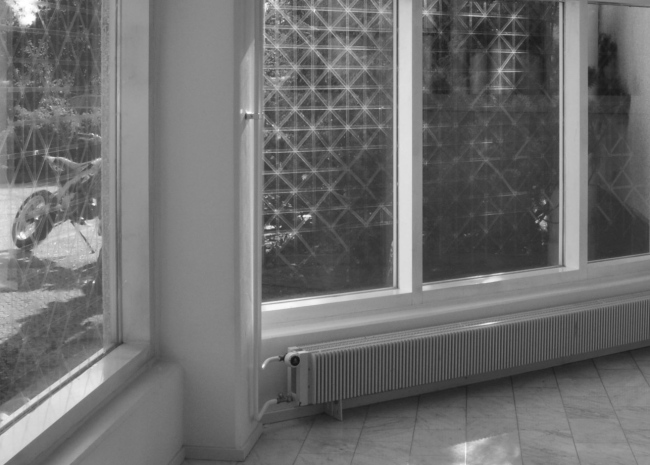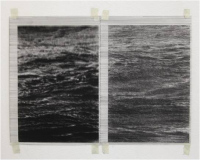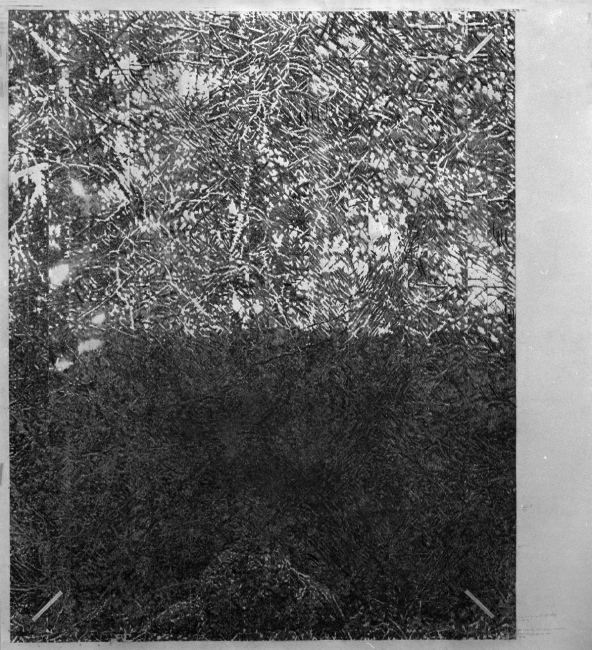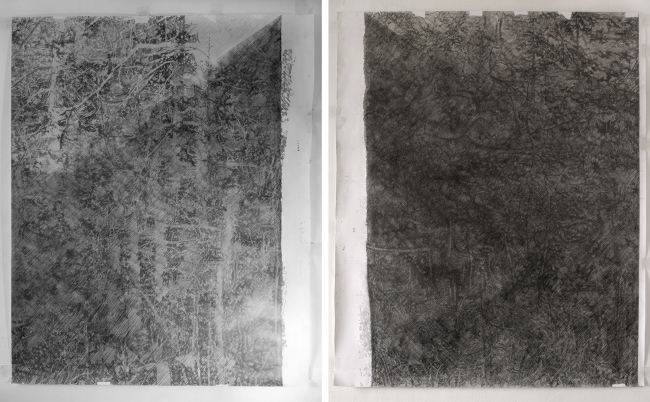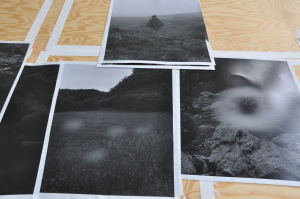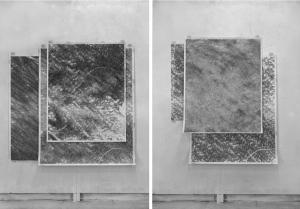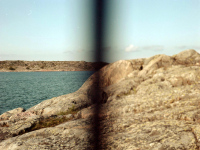
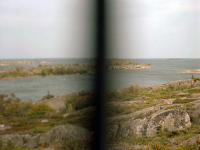


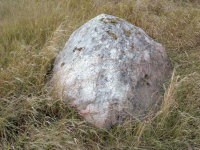
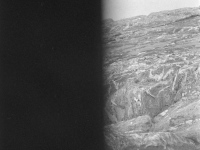
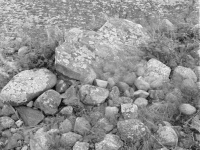
From archipelago thinking. Scans from negative film. ÅLand, Kökar (FI). 2024
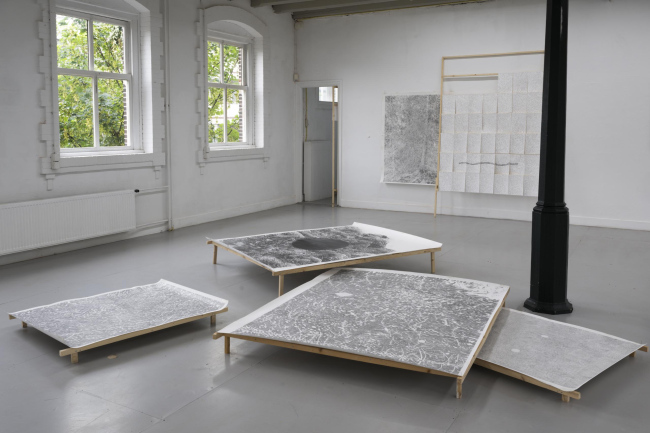

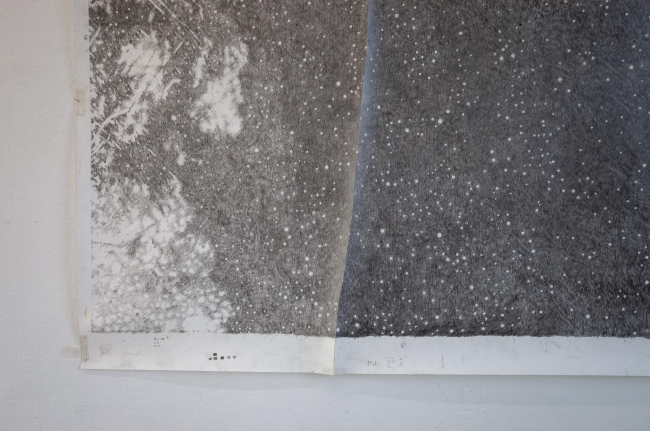
' Eyes of Hands' at Club Solo Breda. 2024
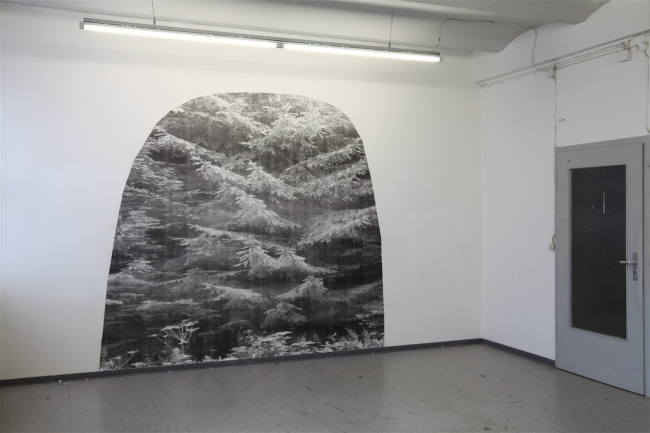
'Forest Wall' Laser print on office paper, glued to the wall. At Artists Unlimited Bielefeld. 2022
| |
\\_//\\_

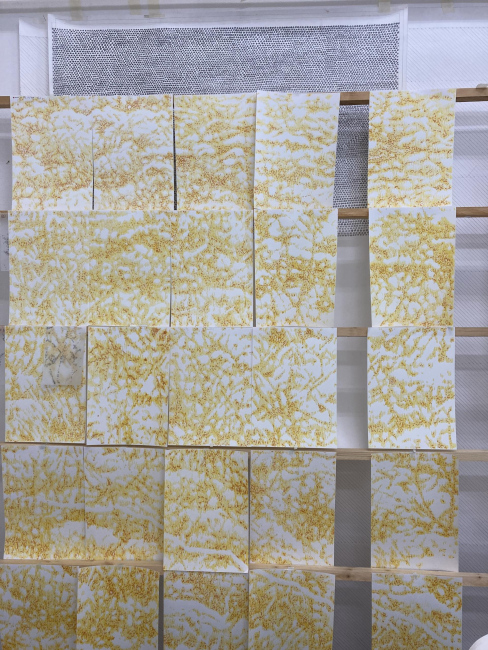
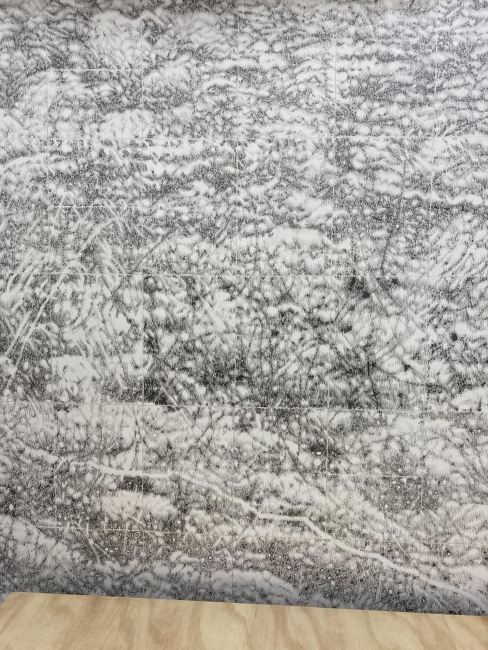
Earth-mapping. Dune. Graphite on paper, 126 x 178,2cm. 2024/25.
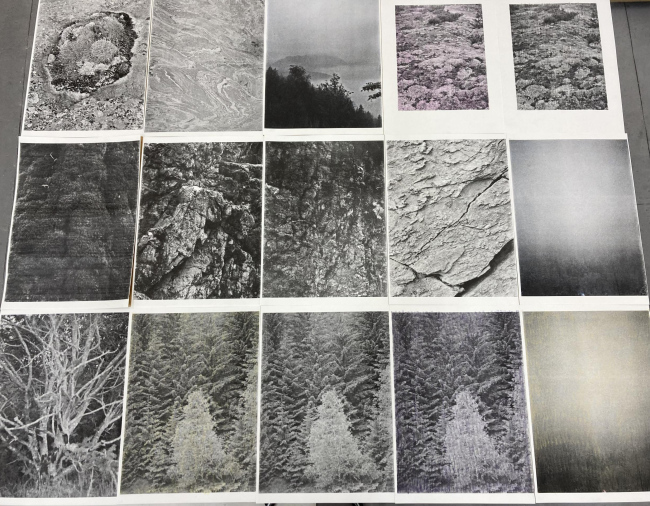
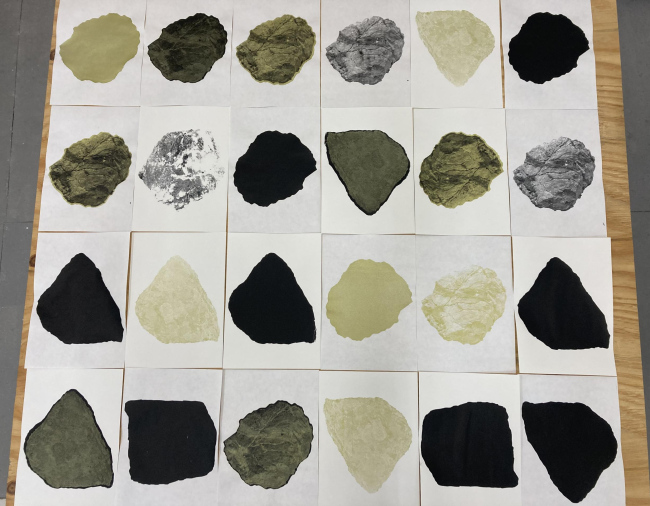

Risoprints on EOS paper and screenprints on Kozo paper. Printed at Grafisch Atelier, Den Bosch. 2025
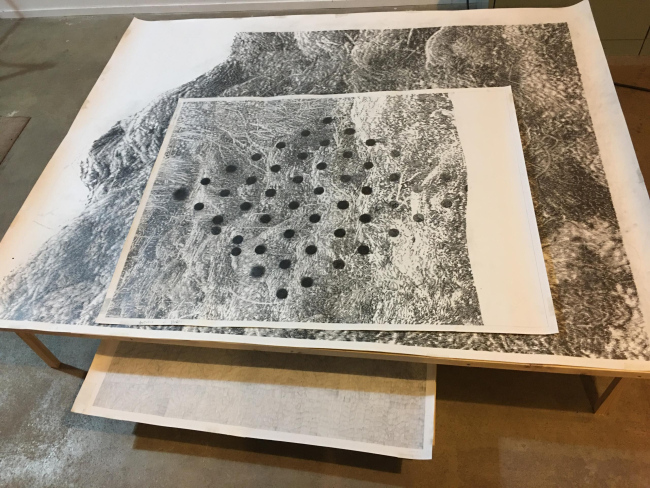
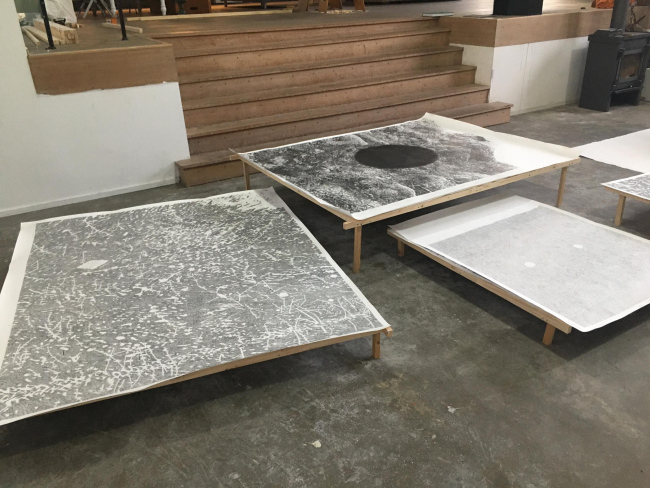
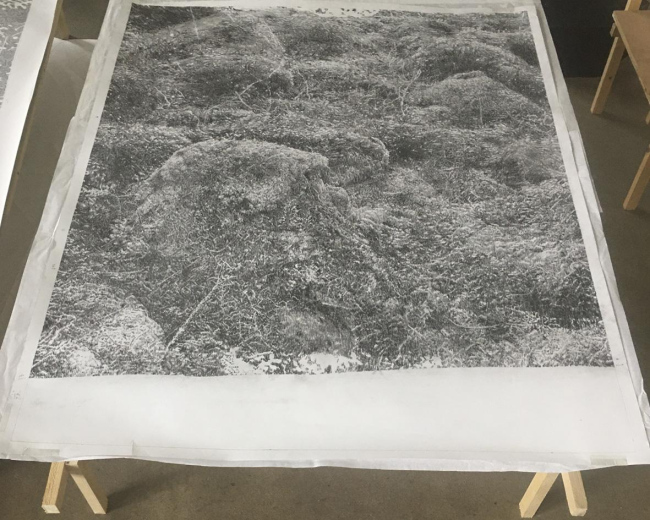
At Pompgemaal Den Helder. Graphite on paper, wooden construction. 95 x 118cm. 2023.
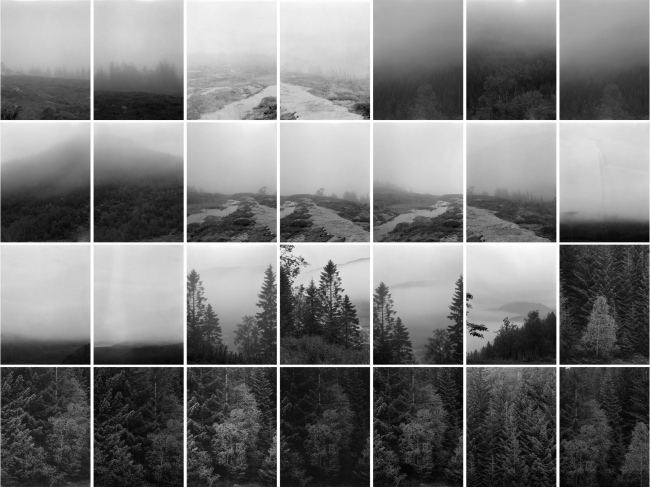
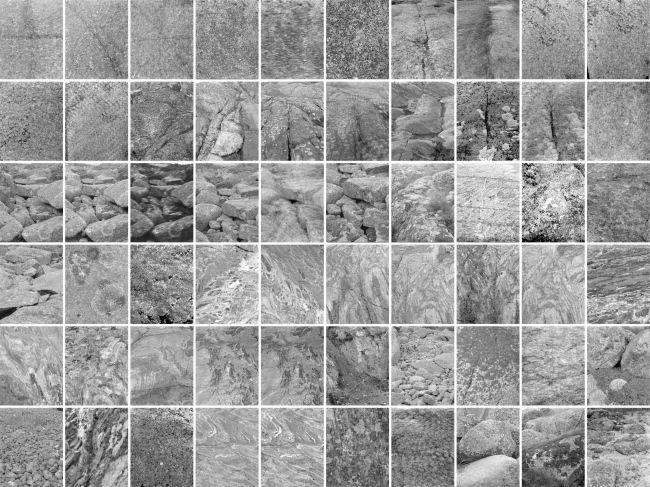
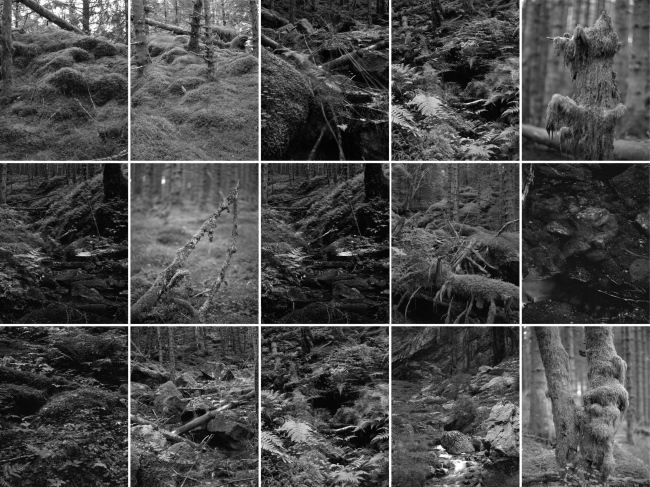
Edges of Landscape is an ongoing photographic project (which recently resulted in a publication) with a focus on surfaces in landscapes. Surfaces conceal and reveal and by looking at them more closely we might get a grip on the underlying processes that formate a landscape.
From Left to right: Dale i Sunnfjord(NO), Kökar - Åland archipelago (FI), Dale i Sunnfjord (NO), Curonian Spit (LT), Klein-Zundert (NL), Brabant (NL)
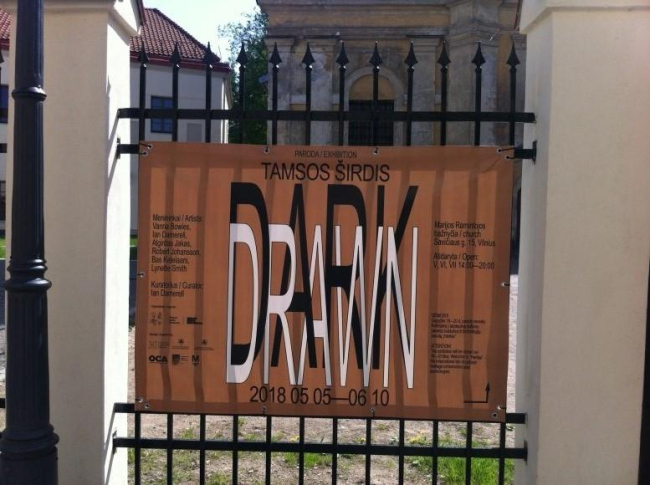
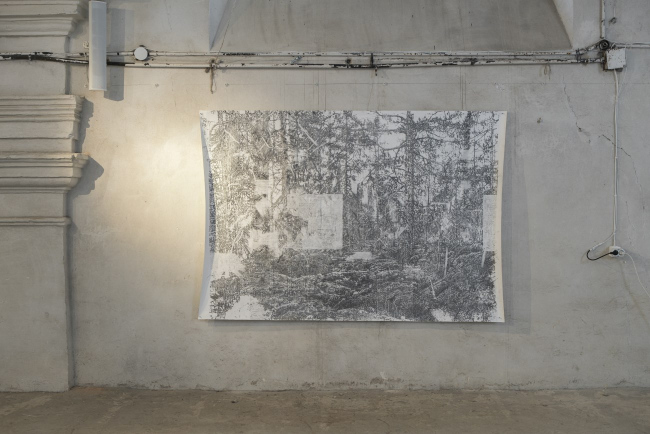

DARK DRAWN, Vilnius, Lithuania. 2018
Drawing based on 3 different images. Where the proces of merging images went wrong i finally erased in the form of a square to avoid ‘contamination’. Now the erased square and the rectanle at the right determine the direction of the view.
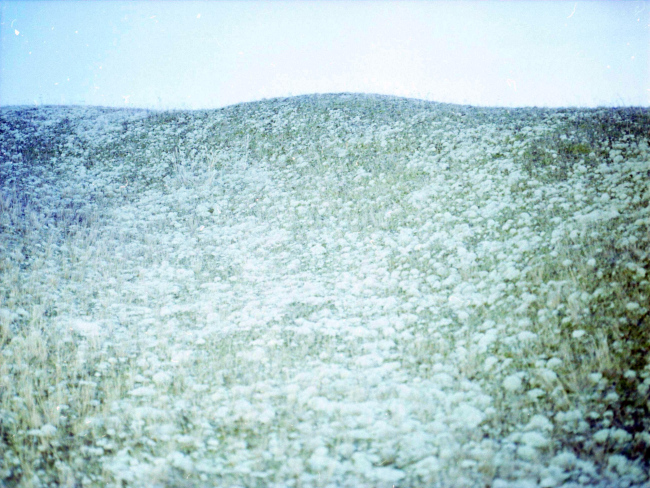

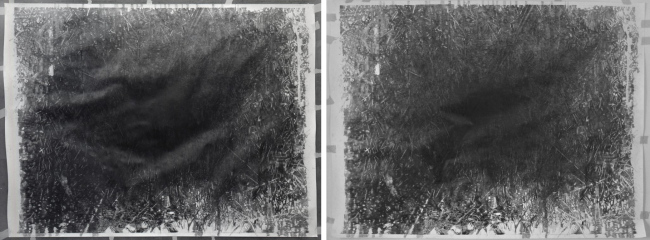
‘Creation is also about destruction, when you draw a line on an empty sheet the emptiness is gone.’ After two layers the whole drawing was erased, then three new layers. The middle part is completely black and the paper pushed to its limits. Each new layer destroys somehow the layer before. At the edges of the drawing there’s a lot of information about previous stages. I like the ambiguousness of the middle part which is at the same time suggesting depth as a black hole and blocking this depth by reflecting the light, thus showing the drawing as an ordinary object.
This drawing was started a few years ago and was never finished nor exhibited. It travels with me. The two images show how the light reflects the bulbed paper differently.
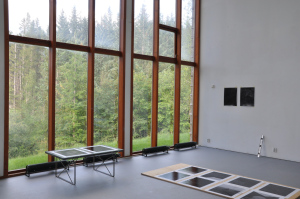
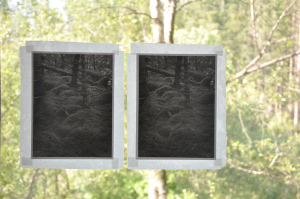
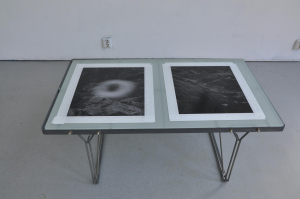
At Nordic Artists Centre Dale, Dale Norway. 2022
For two months i explored the mountainous forests of norwegian’s westcoast at Nordic Artists centre Dale. At the edge of Norway, and the edge of Europe, i sought after ways to question the gap between the camera and the vista. Our ‘cultural gaze’ might be the first edge we encounter when entering a landscape. With basic actions as a form of extended photography, in front of the camera, often with multiple takes, the empty space between camera and landscape is where i try to find some room to maneuver.
The prints on baryta paper were shown (as if drying) on glass plates and windows , enabling a view beyond.
